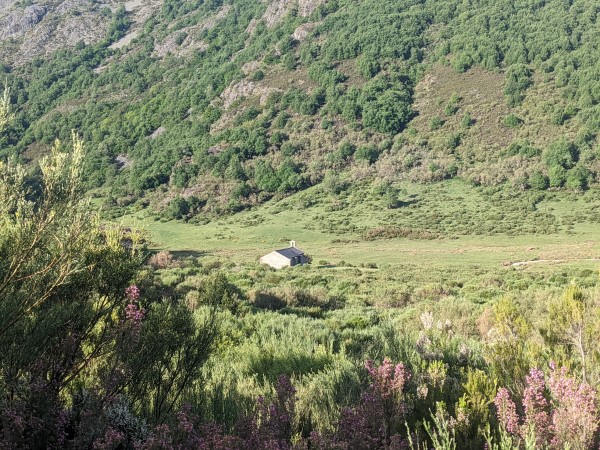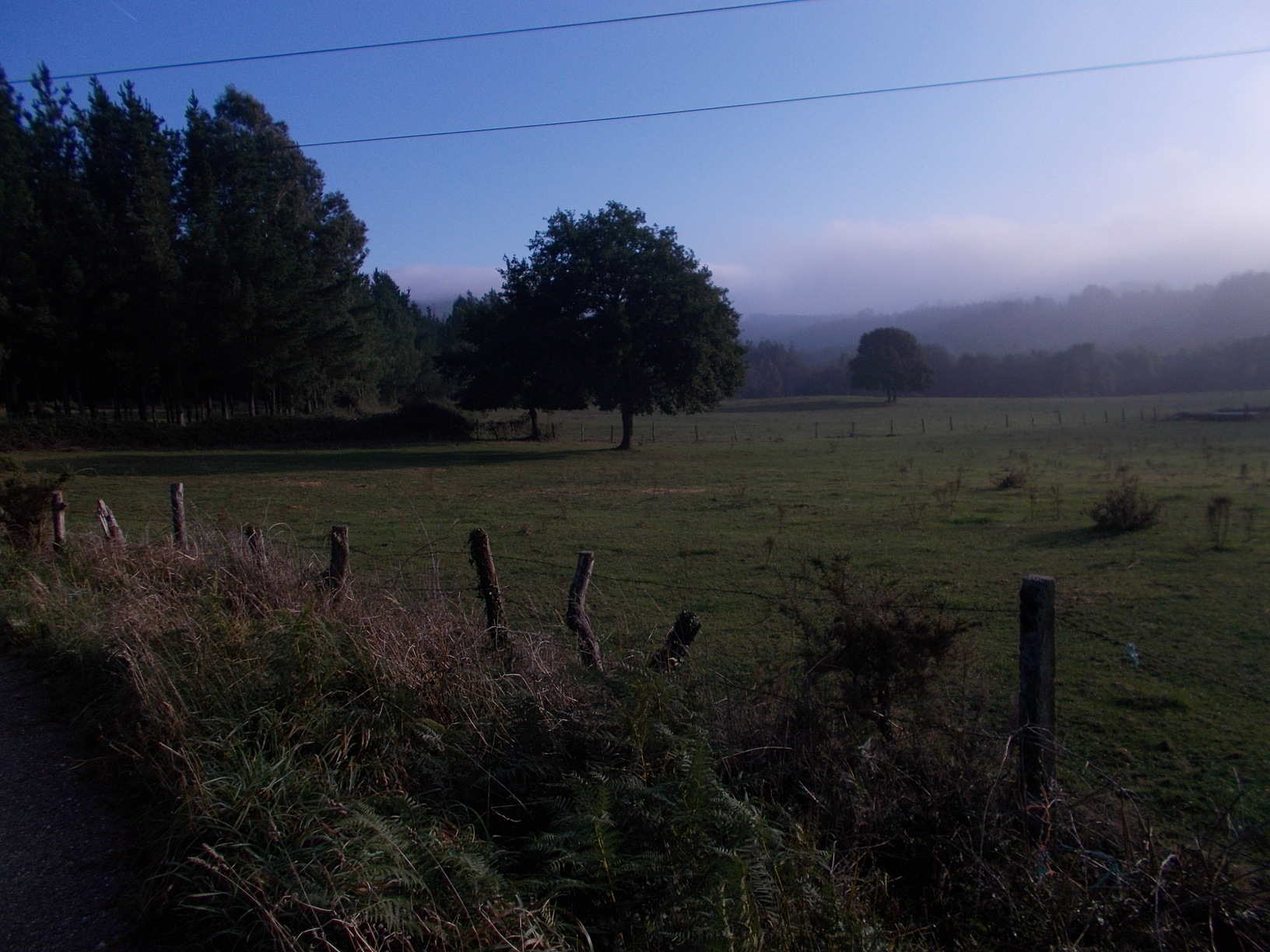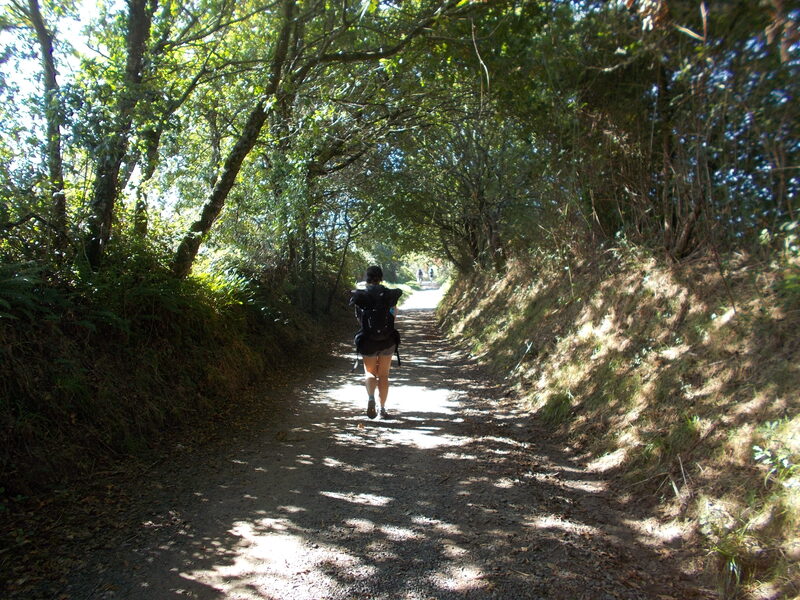I’ve met enough Americans, both on the Camino and outside of it, to know how scared they are of ticks. And perhaps they have a good reason, considering the huge number of ticks infected with Lyme Disease in the forests of US, especially along the famous Appalachian Trail.
Then you have the fear-mongering pharma lobby, and doctors who prescribe antibiotics to anyone who had a tick on his trousers, or simply went to the forest (just for the case it sucked a bit of blood and then decided to drop off), to even intensify the fears. This the world we live in, and perhaps one of the reasons why I enjoy going to Camino and other long distance walks, disconnecting myself from the media, and living without fears. But it isn’t what I wanted to write about here :). Back to ticks:
Should you worry? Are there ticks on the Camino? And if there are tick, do they carry the Lyme Disease, or other diseases? Should you take any precautions? And, how many ticks did I get walking different Caminos, for weeks or months? I will answer the questions on the following lines.
Table of Contents
The number of Lyme Disease Cases in Spain has grown rapidly in recent years
Fifteen years ago Lyme Disease was almost unheard of in Spain. Sure, some people got it each year, but the probability of getting it was almost as high as a probability of being hit by a lighting while hiking in the nature–not high at all. Alarmingly though, mostly due to climate change, but also due to ever-increasing use of chemicals and prevailing mono-culture agriculture, which has impact on the bio-diversity, migration of birds, and many other related issues, the number of ticks has grown almost exponentially.
It is much easier to get bitten nowadays, and, according to number of hospitalizations each year, get the Lyme Disease. I know this isn’t what you wanted to hear, but read further before you cancel your flight tickets :).
Major caminos does not pass through dense forests or over-grown meadows
Sure enough, a few of the hospitalized people with Lyme disease each year are pilgrims, but it doesn’t mean you can contract a tick on the Camino easily. On the contrary, Camino paths are well-trodden, often bare of vegetation (it surrounds you but you do not walk over it). Regardless of whether you walk on the coast or inland, you will walk a big part of the Camino on small country roads for cars–and you can hardly contract a tick on such a route.
What’s more, at least on the major Caminos (Frances, Primitivo, del Norte, Via de la Plata) you’ll always find benches to sit on next to the trail, or you can stop in a bar. Most ticks are contracted when we take a rest on the grass (I am guilty of having this habit), and expose our body to grounds where ticks thrive. If you stick to benches and chairs in bars however, you will hardly come across the tick.

– One of the many wonderful resting spots on Camino Olvidado (Viejo) de Santiago. Who would not take a nap on the green grass next to the ancient church on a mountain plain?
How many ticks did I get walking the Camino?
I am fortunate enough in life to be able to walk often, and I walked trails (not in Spain!) where it wasn’t uncommon to get 2-4 ticks every day. On the Camino though I have never suffered from serious tick problem. Let me share with you my personal statistics from various Caminos (I include a time of the year when I walked for giving you a better idea).
- Camino Frances (walked in September/October) – In thirty days, I did not contract a single tick. I wore short trousers on most days, but I very rarely took breaks on grassy spots along the trail.
- Camino del Norte (walked in July – August, two times) – During my two traverses of this way, I contracted one tick in total. Took it out when it was still pretty small, and didn’t feel any problems. You should know that both times I spent nights sleeping under the stars, often in the nature, yet no ticks. Seems they do not like the coast as much as we do :).
- Via de la Plata (walked in April – May, 2 times) – I have contracted four ticks on la Plata, all during my first trip. I must admit though that on that occasion I ate a lot of lunches in the nature, outside of the way, sitting in grass, which was probably the culprit. I also had other serious health problems on this Camino, and sadly I could not finish it (had to quit less than 200 kilometers before Santiago), but we’ll talk about it in some other post :).
- Camino Portuguese (walked in June) – I didn’t contract a single tick on this way in twelve days. I followed the coastal way from Porto, and seems ticks do not like the area. Or perhaps I was just lucky.
- Camino San Salvador (walked in August) – Not a single tick again, though I enjoyed many rest stops, lying on the ground marveling about the nature around me, or watching the clouds drifting above me. It was hot as well and I wore shorts every day. But it is a short Camino and obviously the chances of having an intimate encounter with a tick are higher when you walk for a month than for a week.
- Camino Primitivo (walked in August) – Got one tick over twelve days, removed it just with my fingers and had no issues afterwards.
- Camino Olvidado (walked in April – May) – Got four ticks in total, most from all Caminos, but it is also true that certain sections were overgrown and I also spent countless hours resting in the nature, often laying on grass.
What to do when you get a tick in Spain
If you are worried about removing them on your own, you should know that emergency medical care is free for all visitors of Spain. You can go to a pilgrim hospital or any other hospital along the Camino, and the doctors there will remove the tick with their tools, and disinfect the “wound”. You should also know that people visit pilgrim hospitals with far more bizarre reasons. I once remember staying in a smaller albergue in Ponferrada, and out of 12 pilgrims staying there on the day, 8 went to pilgrim hospital, mostly with blisters (normal blisters, not some ugly infested blisters). Doctors won’t laugh at you once you come with a tick…
In my opinion though, the best thing you can do is simply removing the tick on your own, or asking a fellow pilgrim to do it for you. No need to panic. If you do panic, however, you can always visit the hospital.
Precautions to take against ticks in Spain on the Camino
Just as you can do in any other part of the world, you can significantly decrease the likelihood of contracting a tick, and later an infection, following a few simple rules:
- Most importantly, check your body thoughtfully after walk every day, for example in a shower. The sooner you remove tick the less likely the infection.
- Avoid sitting on the grass or taking rest outside of public benches and bars. I love taking a nap on the grass along the Camino, but if not getting a tick is a priority for you, you’ll have to forgo this luxury… Still you’ll have many nice spots for a rest, on benches along the Camino, or for example under the roof of one of thousands of Spanish churches dotting the Caminos. And if you cannot find a bench or another fitting resting spot, sit on your backpack to avoid direct contact with the ground and grass.
- Wear long trousers. This one won’t work for me again, and especially now with global warming when one has 30+ degrees on Camino Frances for 6 months of a year, but if you’re super scared of ticks, wearing long trousers will help. You can also use a repellent for further protection, though from my experience most of these repellents do not really work (against mosquitos or ticks).
Final word on ticks on Camino de Santiago
It makes no sense to lie–you may get a tick on the Camino, and you may theoretically even contract the Lyme disease. Though honestly the chances are perhaps as high as getting involved in a traffic accident while walking–which means really low.
Tick population has grown a lot in Spain in recent years, but the ways Camino follows aren’t ideal breeding ground for them. Judging by my personal experience from different Caminos, as long as you take some basic precautions the chances of contracting a tick are super low. I hope that this post helped you understand better the problematic of ticks on the Camino, and encouraged you to go on the pilgrimage, regardless of how scare of ticks you are. Buen Camino!
Matej
May also interest you:




![Ultralight Packing List for Camino de Santiago [2025 Edition]](https://caminolovers.com/wp-content/uploads/2022/03/altra-shoes-640-x-480.jpg)


